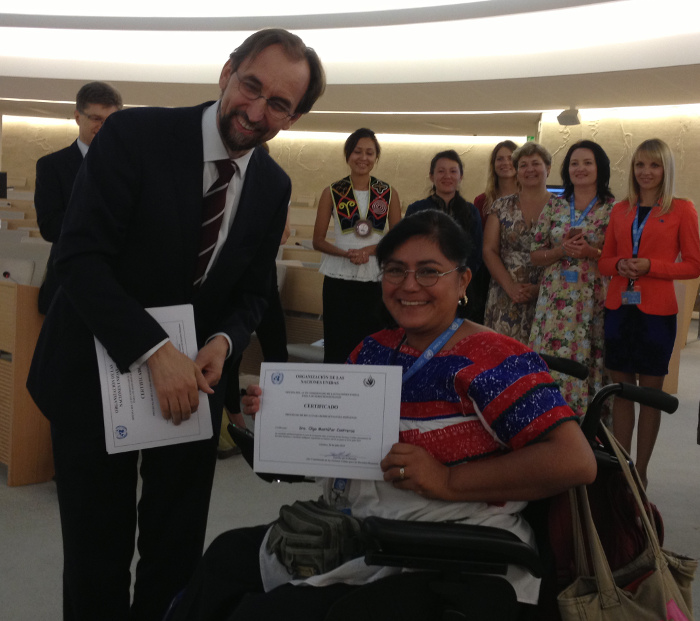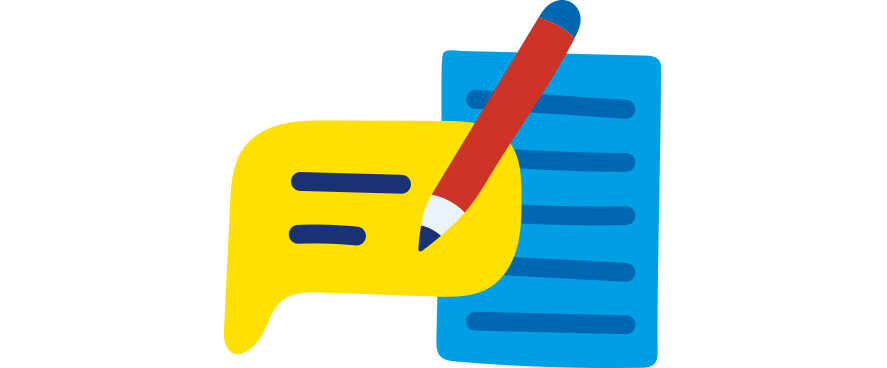-
07 September 2017
Category : Interview
Our right to autonomy is frequently not understood
Olga Montúfar, president of the Fundación Paso a Paso and of the Global Network of Indigenous Persons with Disabilities, talks to us about her experience as an advocate for the rights of indigenous persons with disabilities
 Olga Montúfar following a meeting of the United Nations High Commission on Human Rights
Olga Montúfar following a meeting of the United Nations High Commission on Human RightsOlga was born 38 years ago in Mexico in the heart of the indigenous community of San Miguel Totolapan in the state of Guerrero. Polio left her with a motor disability that prevents her from walking.
An engineer by training, the difficulties she had to face in finding a job in her field led her to decide to dedicate herself to working to defend the rights of people with disabilities.
In July of this year she participated as an external expert in the opening seminar of Bridging the Gap II, a project funded by the European Union and led by FIIAPP aimed at contributing to socio-economic inclusion, equality and non-discrimination of persons with disabilities in low- and middle-income countries through institutional strengthening and more inclusive and responsible policies.
Participating in the project are three cooperation agencies of the European Union (Austria, Italy and Spain), a European organisation of persons with disabilities (EDF), a network of disability and development organisations (IDDC), the Directorate-General for Development and Cooperation of the European Commission (DG DEVCO), as well as the Finnish Ministry for Foreign Affairs and the United Nations High Commission on Human Rights, as observers.
What are the main problems faced by indigenous people with disabilities?
The main problem we face is that this dual identity often makes it unclear which administration is responsible for developing the public policies or the programmes to benefit indigenous people with disabilities. The indigenous people with disabilities themselves also experience this same confusion. Many people within the movement of indigenous peoples identify themselves only as indigenous and not as persons with disabilities, and vice versa.
In addition, our active participation is not highly visible, and often family members, lack of economic resources and lack of accessibility limit our participation.
In the case of women, there is also a situation of triple intersectionality and the risk of multiple discrimination based on gender, indigenous identity and disability. What are the specific challenges of this group? What progress has been made in the situation of indigenous women with disabilities?
Indigenous women mainly face the chauvinistic structures of our autonomous governments, educational backwardness and scant support from other indigenous women. These limitations are multiplied in the case of indigenous women with disabilities because the negotiations regarding their participation in society are initiated in their family environment, where our right to autonomy is often not understood.
What measures need to be taken to ensure that indigenous people with disabilities benefit from the protection of the CDPD (Convention on the Rights of Persons with Disabilities) in the same ways as other persons with disabilities?
The most important challenge is understanding the legal pluralism that exists within the indigenous systems and not falling into the trap of identifying indigenous communities with rural areas, because this is not always the case and leads, for example, to policies being designed for rural areas that cannot always be applied to indigenous communities living in urban settings.
The rural areas are governed by the legal instruments the State designs. In contrast, indigenous communities are governed by uses and customs established by their ancestors from their origins, and, over time, they gradually add new agreements for social coexistence suitable for new generations.
Additionally, it is necessary to make a rigorous interpretation of the United Nations Declaration on the Rights of Indigenous Peoples regarding the rights established by the Convention on the Rights of Persons with Disabilities. For example, the Declaration does not mention the issue of accessibility, but it does talk about the right to enjoy our territories, which requires that we have mechanisms that guarantee access to them.
Bridging the Gap II involves the participation of a European organisation for persons with disabilities (EDF) and a network of disability and development organisations (IDDC). How do you feel about the incorporation of civil society organisations in international cooperation projects?
Generally the organisations of persons with disabilities are consulted when the projects require our participation, but we rarely have the economic capacity to get to the places where the information and projects are centralised. That makes it more difficult not only to be consulted but also to participate as direct stakeholders in those processes. Therefore I think that it is a very good thing for civil society organisations to accompany the process or to somehow provide input on the life experience and solutions closest to reality.
You participated as an external guest in the opening seminar of Bridging the Gap II. Tell me about your experience at this meeting. What do you think the main challenges of this project are?
For me it was a wonderful experience because it was the first time I had been able to be present at the kick-off of a major project. I consider the main challenge of this and other projects that work on disability and development issues to be the ability to get good information from the fundamental stakeholders. That’s why it’s very important that the organisations of persons with disabilities or of indigenous peoples include indigenous people with disabilities who are still living in their communities of origin, because many of the social organisations and leaders in this field have never been in an indigenous community and they assume that the needs are the same in all of them. But every community is different, just as an indigenous community is not the same thing as a rural area or an urban setting.
The views and opinions expressed in this blog are the sole responsibility of the person who write them.




